
Dwight Peck's personal website
Two weeks in Piemonte and Tuscany
in northwest Italy's worst weather in yonks
You may not find this terribly rewarding unless you're included here, so this is a good time for casual and random browsers to turn back before they get too caught up in the sweep and majesty of the proceedings and can't let go.
We're spending eight days in Lucca, with time built in for sightseeing in the region.
So now we're assembled for . . .
An afternoon in Pistoia
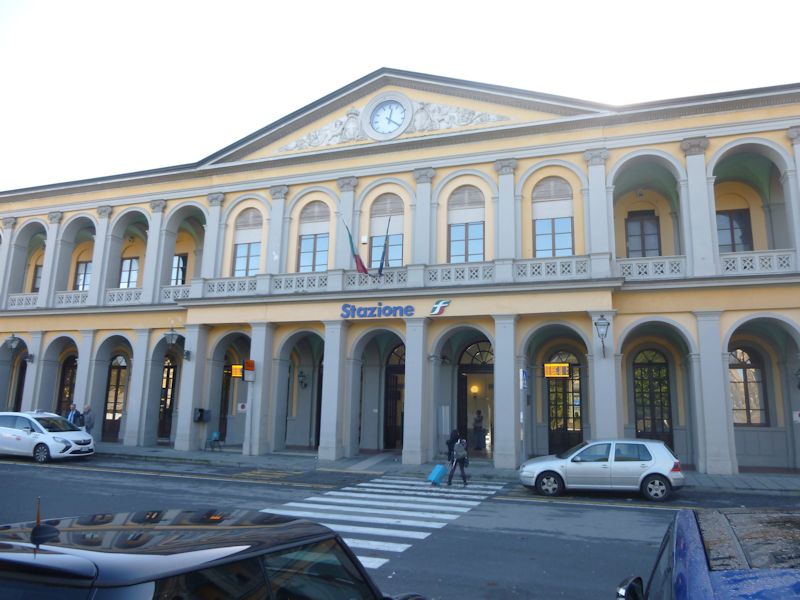
The rail station in Lucca, 19 November 2014; we're on our way.

45 minutes later up the train line towards Florence, we're in Pistoia and looking for the centro storico. Near the Hotel Little Ritz.

There's a little bit of storico right there, part of the old city wall. Building upon earlier Celtic, Ligurian, and Etruscan settlements in the area, in the 3rd century BC the Romans extended their military road the Via Cassia and made Pistoia a fortified base for their conquest of the Ligurian coast and mountains up to the Po, and later elevated that to the status of a colony.

On the Via Cavour, a street market is in progress. Pistoria, as the Romans would have said, got into the limelight in early 62 BC when the senatorial conspirator Catiline and his remnant army were caught and destroyed near here.
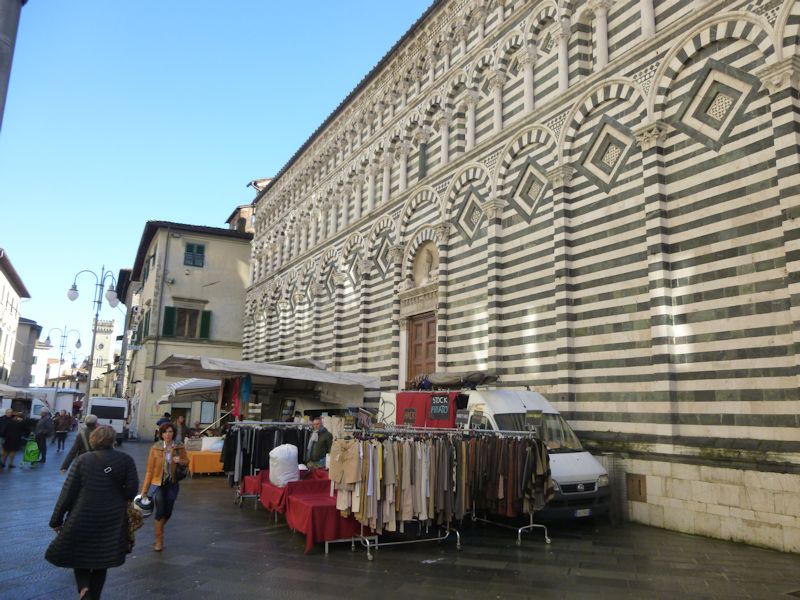
In fact, the street market is in progress nearly everywhere else in town, every Saturday and Wednesday, but just starting to pack up now for the day.

The east-west Via Cavour, near the church of San Giovanni Fuorcivitas on the left. The Gothic king Radagaisus roamed around northern Italy unimpeded in late 405/early 406, and destroyed Pistoia as part of his lengthy siege of nearby Florence, before he was chased down by the Roman general Stilicho and his Goth and Hun auxiliaries. But the little town bounced back and earned its first bishop, unnamed, in 492.
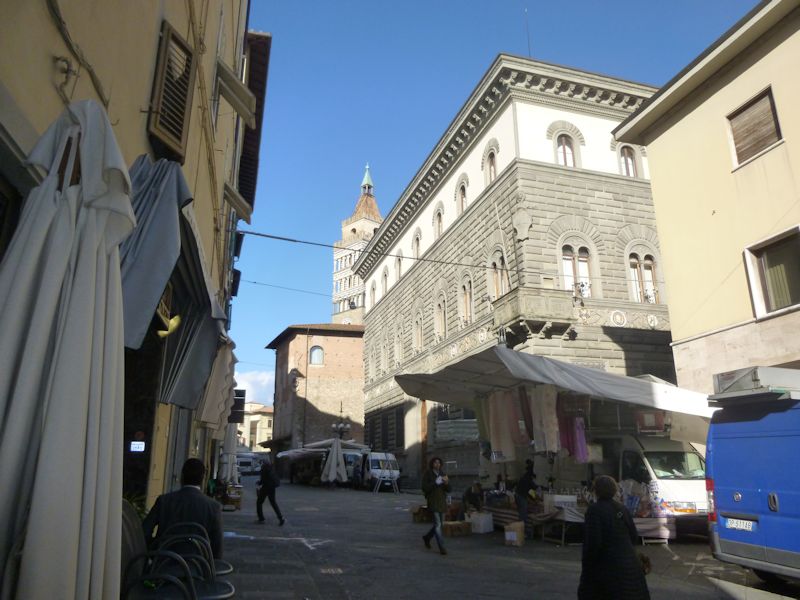
Northward on the Via Roma towards the Piazza del Duomo (more street market). Under Lombard rule throughout northern Italy, ca. 570 until Pepin's and Charlemagne's Frankish invasions in the late 8th century, Pistoia rose in strategic importance as a gastaldato, directly administered by a viceroy of the king, and was walled and fortified.

The belltower of the Cathedral peeking out. During the Frankish period, the city seems to have grown under the uneasy rivalries of the Bishop and a few powerful families, but by 1105 it was functioning as a sort of republic with elected consular magistrates, and in 1177 the city passed its first legal statute in its own name, one of the first cities in Italy to do so.
The Piazza del Duomo
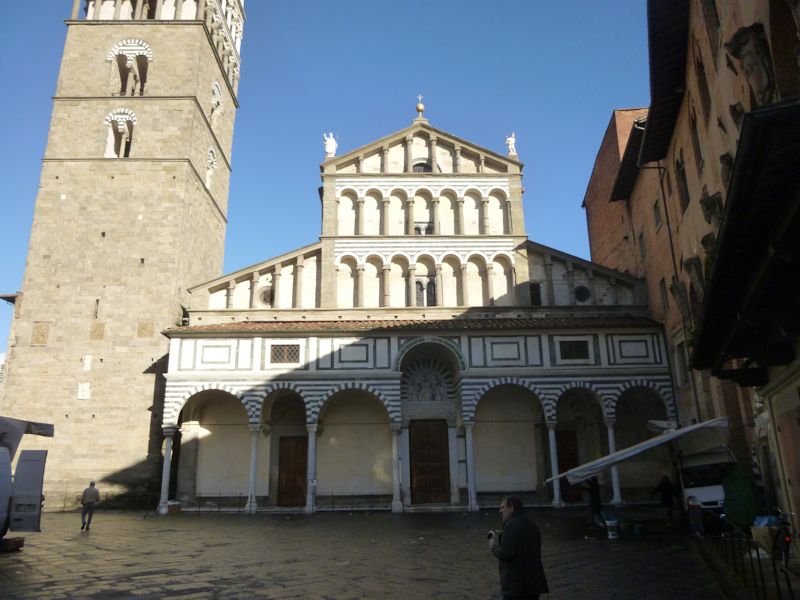
The Duomo, or Saint Zeno's Cathedral, attested from 923, improved through the 12th to 15th centuries. (It's closed until 15:00, we'll come back later.)

The unattached bell tower, 67m high
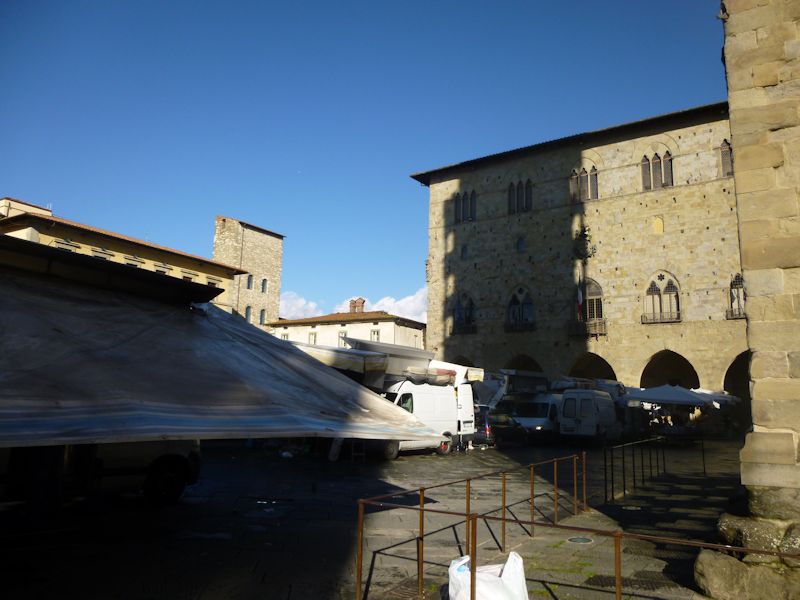
The Piazza del Duomo, presently occupied by street marketers packing up their vans

The bell tower, with clock. From the mid-13th century onward, Pistoia was caught up in the internecine factional battles between the Guelphs and Ghibellines, and between the White and Black factions amongst the Guelphs. Guelph Florence seized Ghibelline Pistoia in 1254; the city was besieged by Lucca in 1302-1306, and the warlord Castruccio Castracani engineered Lucchese domination of the town in 1322-25 but had to besiege it again in 1328; and so on. In 1530, Pistoia was formally annexed into the Duchy of Florence, and the city's history became bound up with the tangled fortunes of Florence thereafter.
The Pope besieged the city in 1643, but 20 years later the city got its own back when a scion of the powerful Rospigliosi family became Pope Clement IX.

On the western side of the Piazza del Duomo, the Palazzo Pretorio, formerly the palace of the 14th century podestà or chief administrator of the city, now the main courts building of Pistoia province.
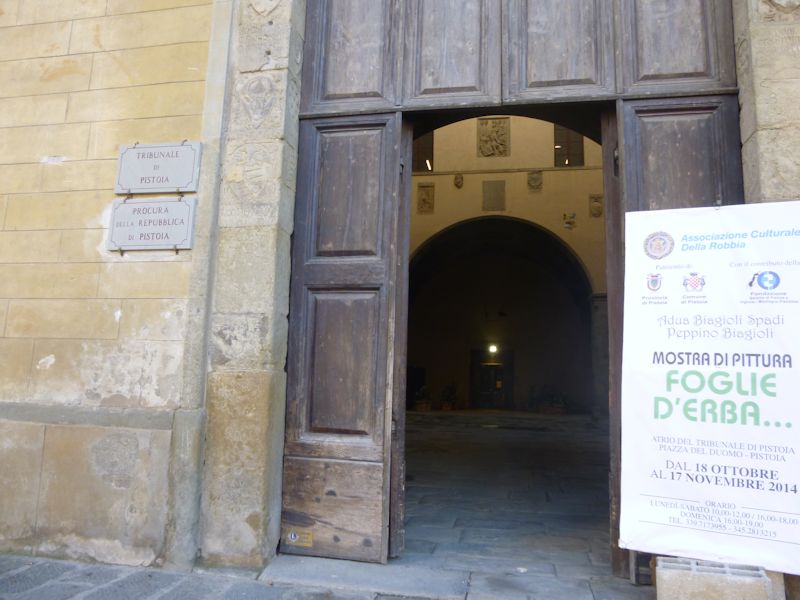
With an exhibition of "Leaves of Grass" (not the Whitman kind), which ended two days ago

The courtyard of the tribunal palace
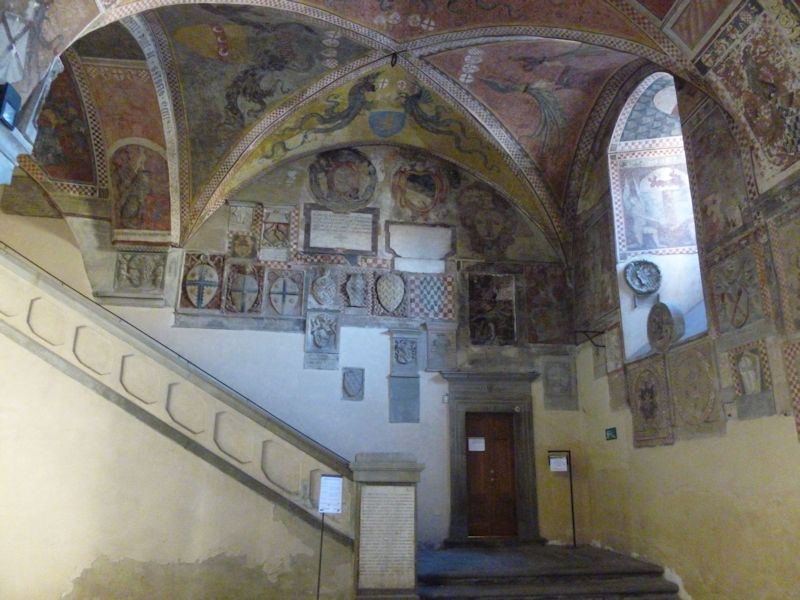
The original 14th century staircase, with frescoes and armorial bearings; judges, lawyers, witnesses, and perhaps perps were breaking for lunch and descending the staircase deep in conversation.
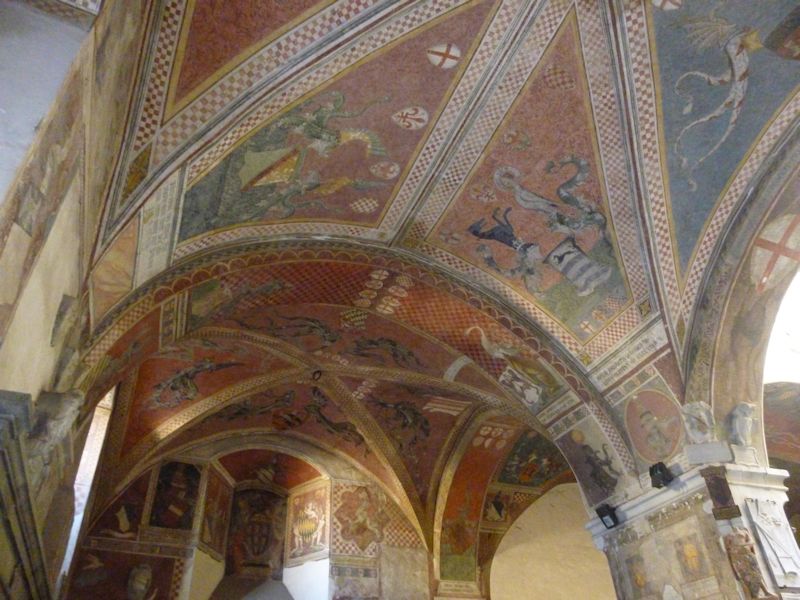
Painted ceilings in the courtyard

The belltower and the street market, in which we seem to have lost Kristin again

The Bishop's Palace, Palazzo dei Vescovi, alongside the Cathedral, built in the 11th century as a fortified family palace, remodeled in the 12th and 13th century as the episcopal residence. There is meant to be a brilliant tour of the palace and cathedral museum, but, errm . . . it's closed today.

Oh, there's Kristin, what joy, what bliss.
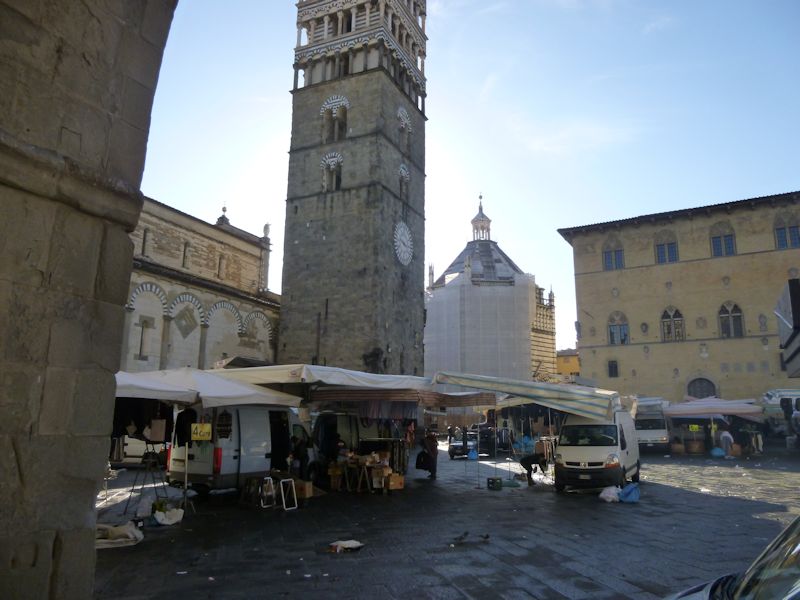
Everybody's packing up and leaving a kind of orderly mess; streetcleaners are poised on a side street like SWAT teams, ready to move in.
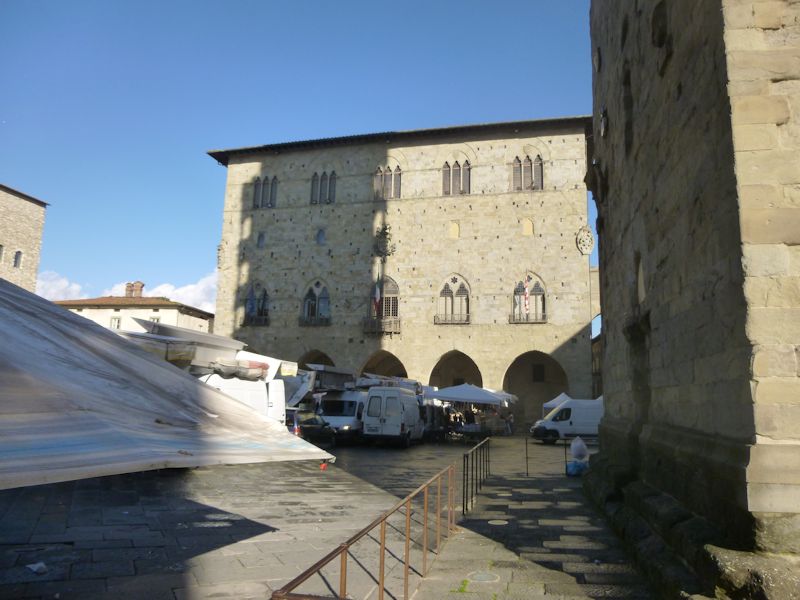
The Gothic Palazzo del Comune or town hall, built between 1294 and 1385: an imposing front over arcades facing the Piazza del Duomo, presently also the home of the Museo Civico or town museum and pinacoteca.

The museum, as it turns out, is closed today.
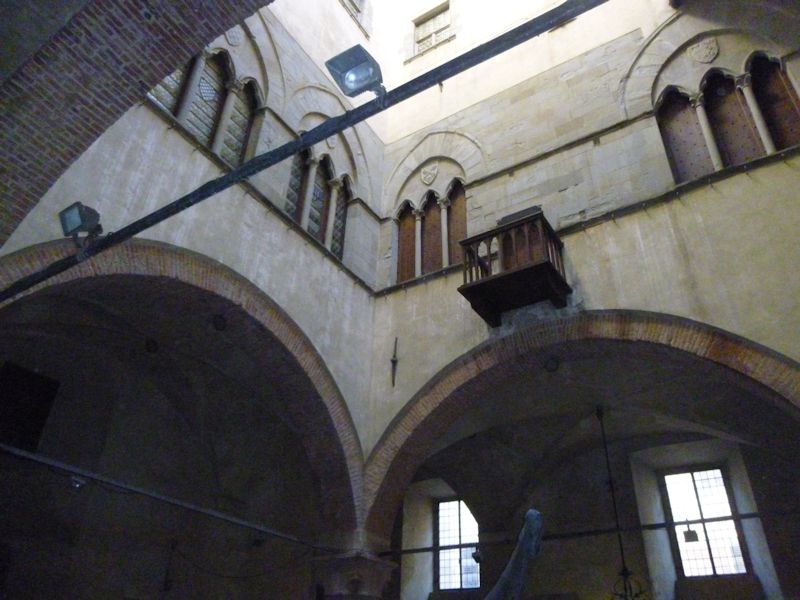
The courtyard of the Palazzo del Comune

The courtyard with the stone statue of St James from the early 15th century
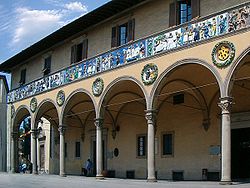
The Ospedale del Ceppo is a major attraction in Pistoia, founded in 1277 and the city's main hospital after the Black Death epidemic in 1348, with over the portico a beautiful terra cotta frieze by Giovanni della Robbia from 1530. Said to be really remarkable, but . . .
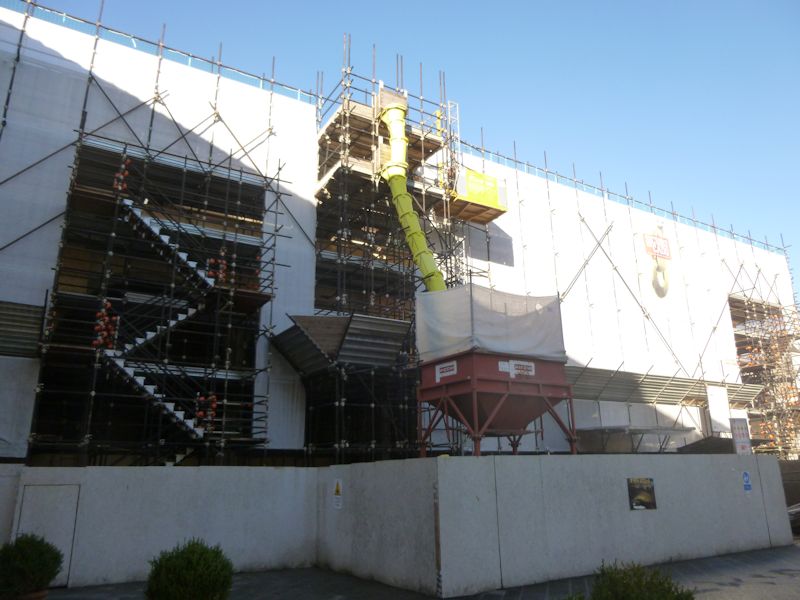
. . . who knows? Not us. The gift shop and entrance to the hour-long guided tour of Pistoia Sotterranea, the labyrinthine underground passages beneath the hospital and part of the city, were open for business, but we didn't spring for it.

The Torre di Catalina or Catiline's Tower, a 98m medieval family tower, is named for Lucius Sergius Catilina, a first century BC Roman Senator who led one or two conspiracies against the aristocratic clique in the Senate and was defeated near Pistoia in 62 BC.
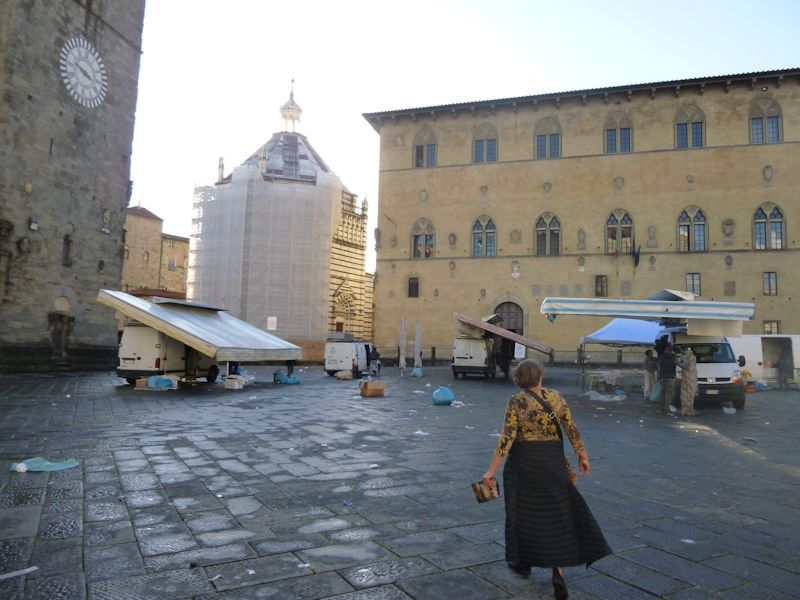
The Piazza del Duomo with the last of the street market vans clearing out, with the Baptistry and Palazzo Pretorio behind. Once a year, in July, the Piazza is the venue for the Bear Joust, wherein horsemen from the neighborhood districts, in 14th century costume, compete with lances at hitting a fake bear at full speed.
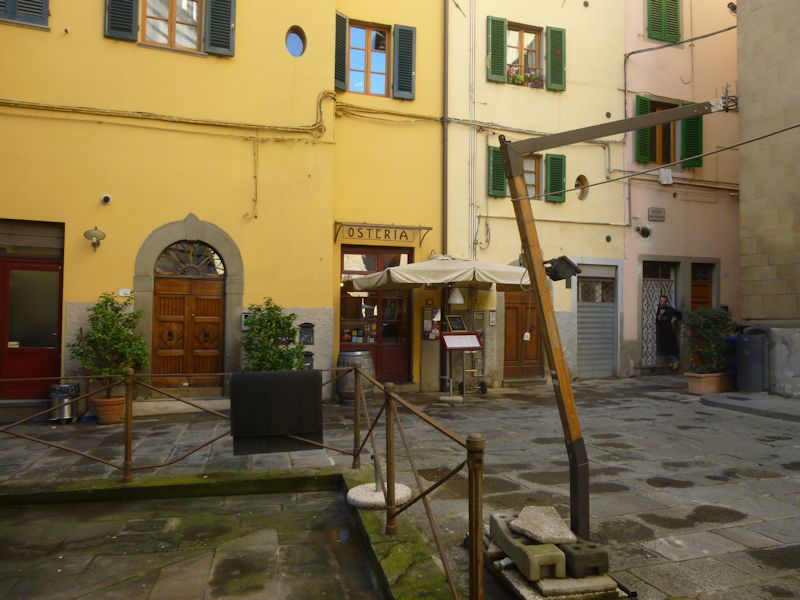
Kristin's gone in for a little lunch, so we'll have a look round some of the neighboring streets.
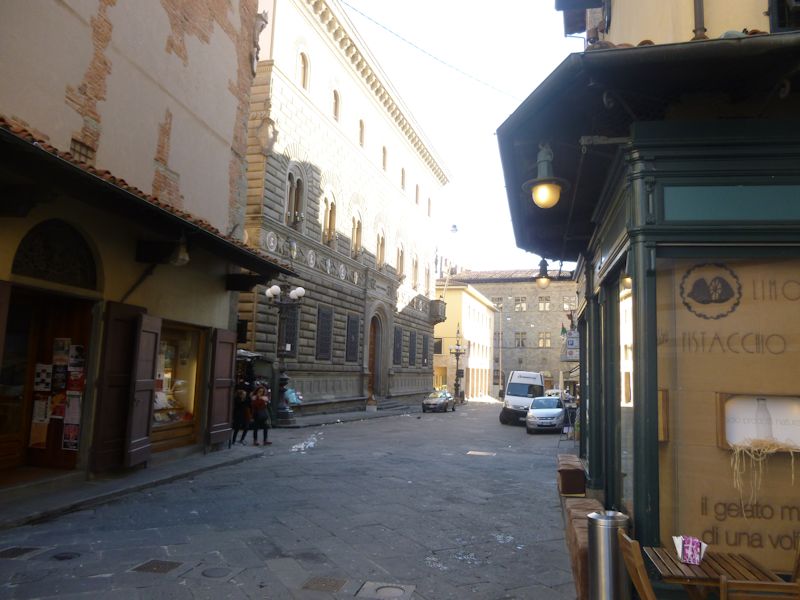
The Via Roma

The Baptistry of San Giovanni, a 14th century octagonal church in the trademark white and green stripes of the region, was designed by Pisano, Giotto's successor at the Cathedral in Florence. It's, errmm, closed.

The back of the Baptistry. It's said to be great inside. (Who knows?)
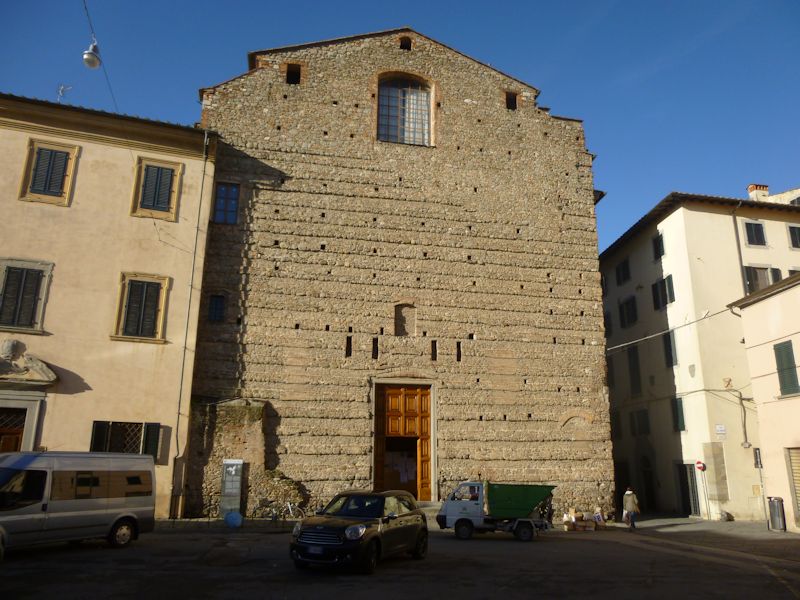
The Church of Spirito Santo (formerly of Sant'Ignacio di Loyola), a Jesuit church begun in 1647 and consecrated in 1694, renamed Spirito Santo when the Jesuit order was suppressed in 1773 but re-renamed for Loyola in 1998. They had to tear down a neighborhood of houses to make room for the church, its college, and the piazza in front. We'll have a look inside, with modest expectations.
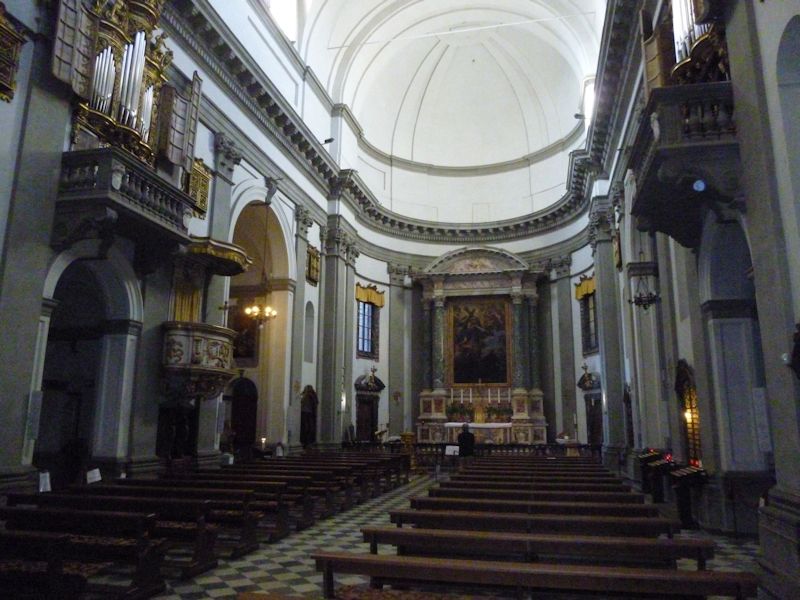
Pretty much as expected, though the high altar was designed by Bernini

All the usual grace notes
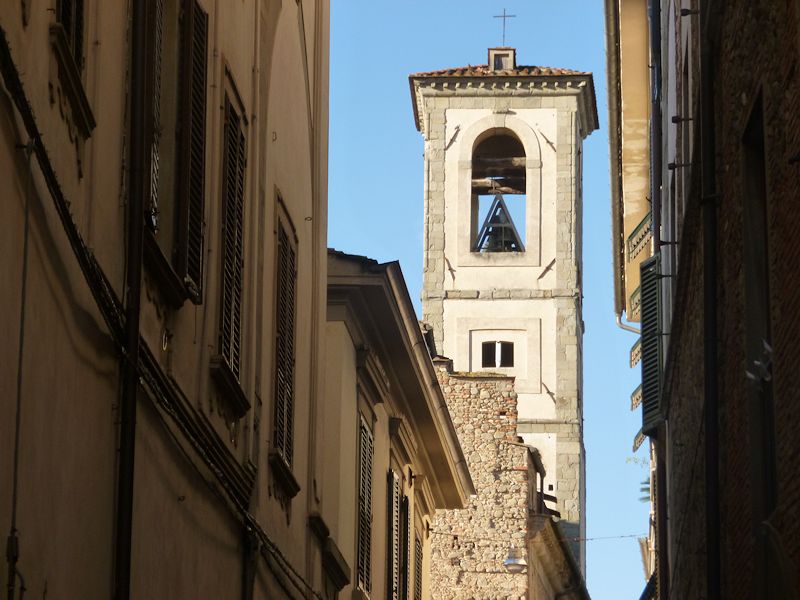
The belltower of the Church of the Spirito Santo

An ice cream shop
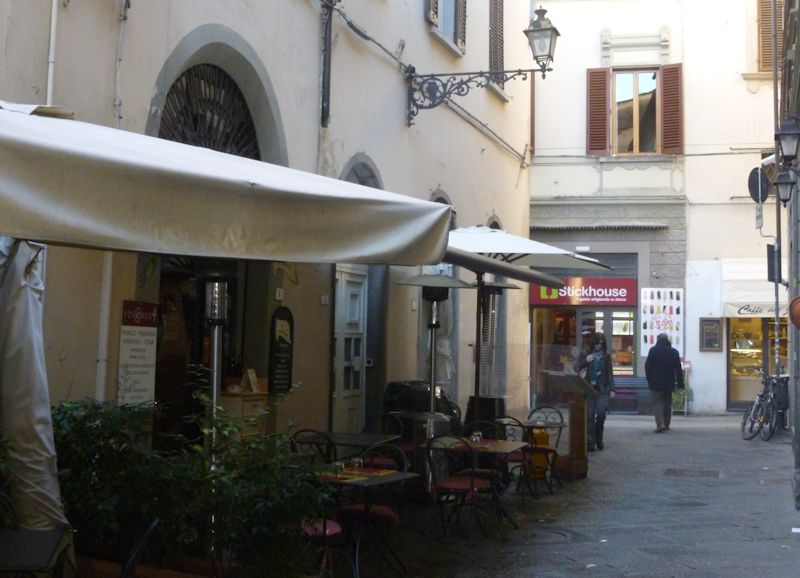
The 'Stickhouse' might be serving big juicy sticks from Argentina or the USA (like the French "bifsteks"), but in fact this too is a gelateria.

The cathedral belltower and baptistry
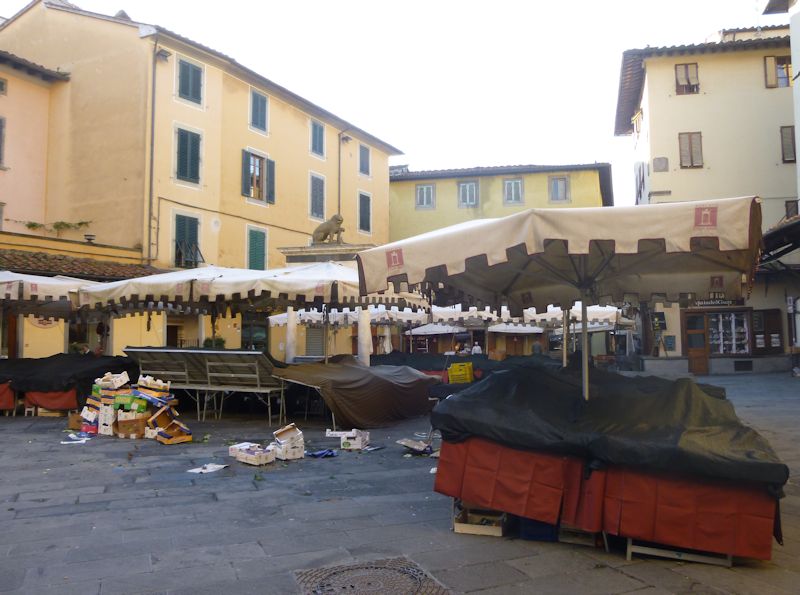
The Piazza della Sala, with its venerable daily food market. It was the focal point of the city in Lombard times; the Lion's Well in the centre dates from 1453.
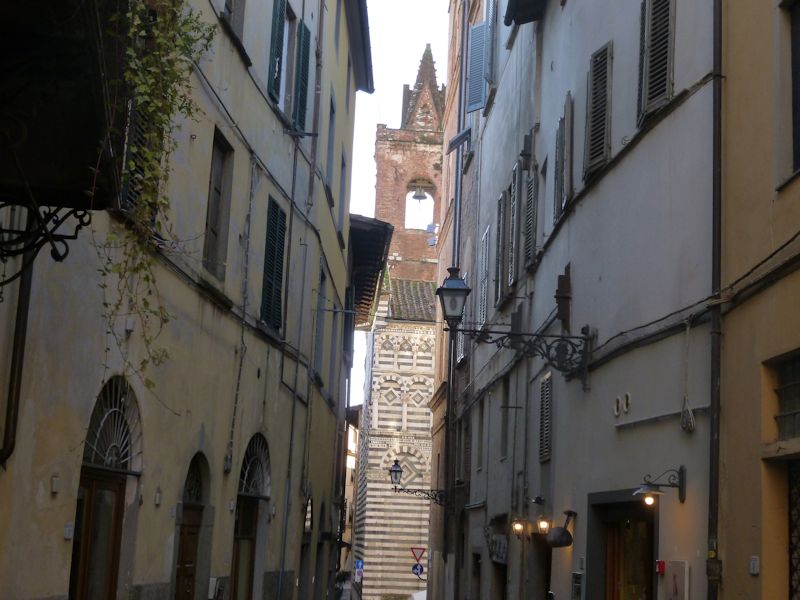
Whilst we're waiting for the Duomo to reopen at 3 p.m., here's a glimpse of the belltower of the Chiesa di San Giovanni Fuorcivitas (i.e., originally outside the Lombard city walls).
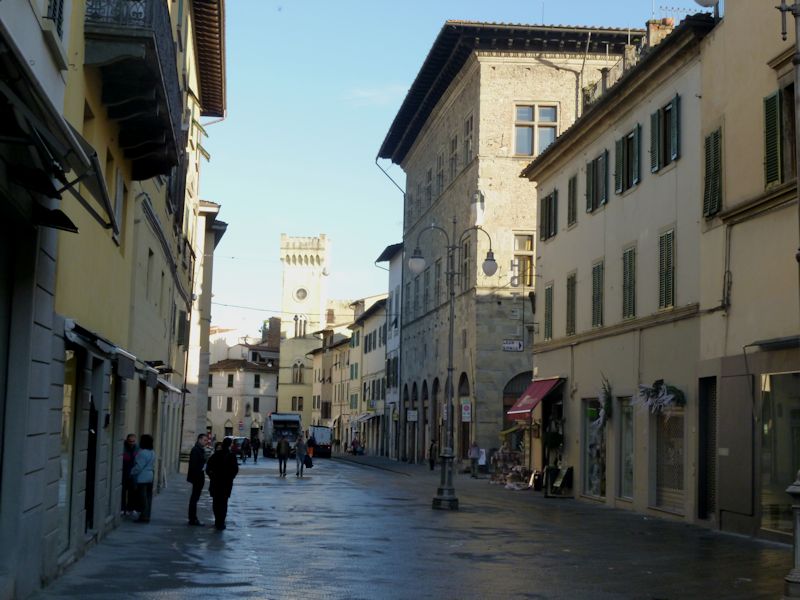
The Via Cavour and the tower of the 14th century Panciatichi Palace, the only medieval private fortified palace remaining.

The Church of Saint John Fuorcivitas, in the characteristic green-and-white Pisan-Romanesque striping

The massive church (umm, closed today) was built in the 12th through 14th centuries, and thoroughly restored after the Allies bombed the daylights out of it in World War II.
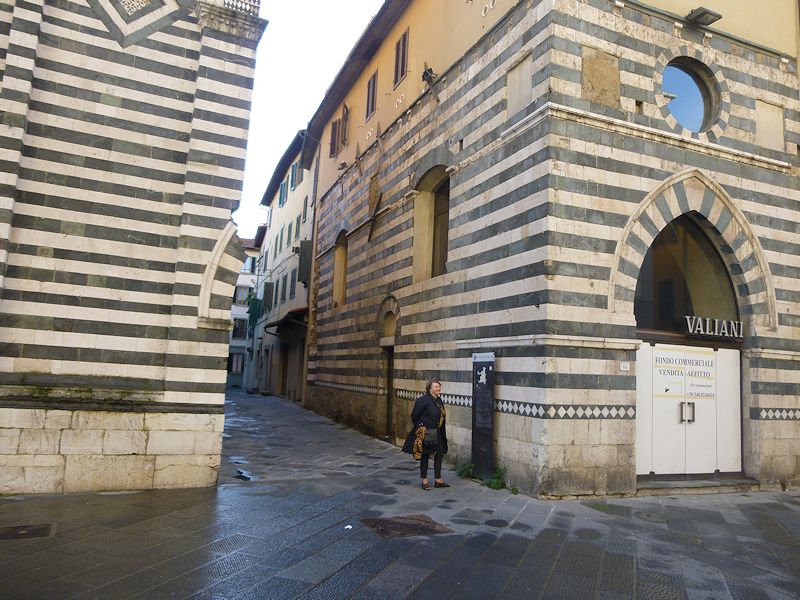
Kristin and the information panel
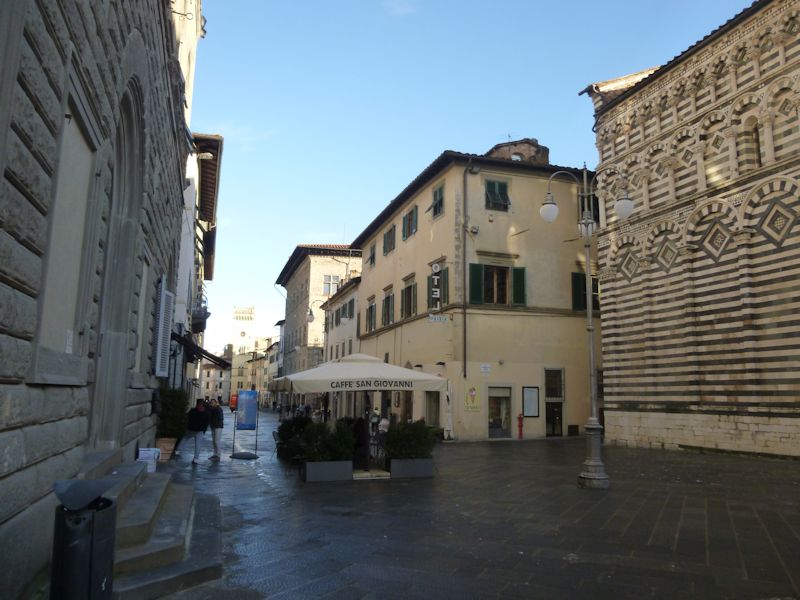
The Via Roma outside the San Giovanni church
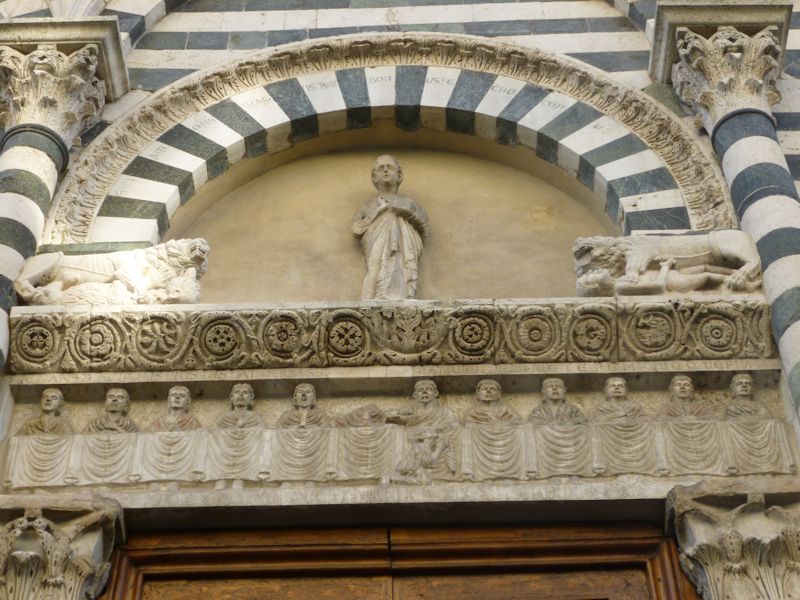
The Last Supper on the architrave dates from 1166. The ubiquitous lions eating people seem to be a common motif around here.
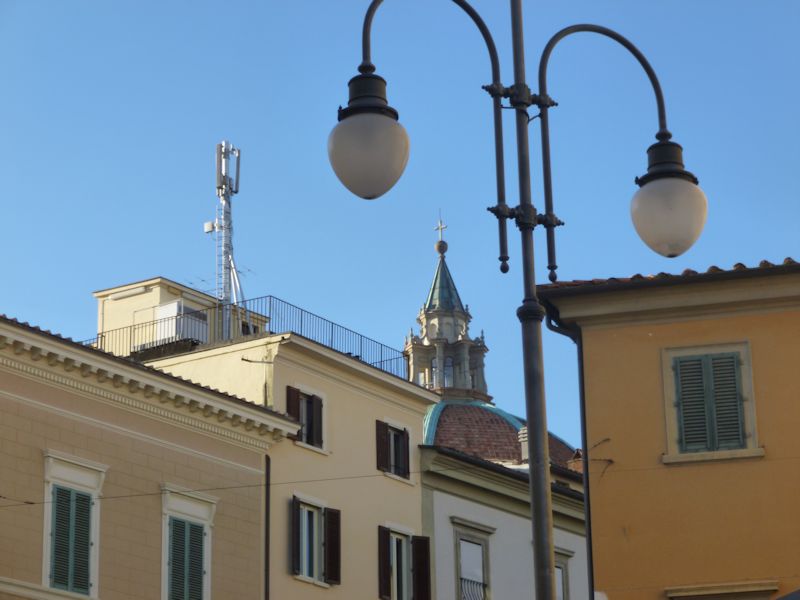
Pistoia street scene. An excellent study of Pistoia's political, economic and social development from rapid growth in the 12th and 13th centuries, contraction through the disastrous 14th century, and renewed growth under Florentine hegemony in the 15th, is David Herlihy, Medieval and Renaissance Pistoia: the social history of an Italian town, 1200-1430 (Yale, 1967, reprinted by ACLS).
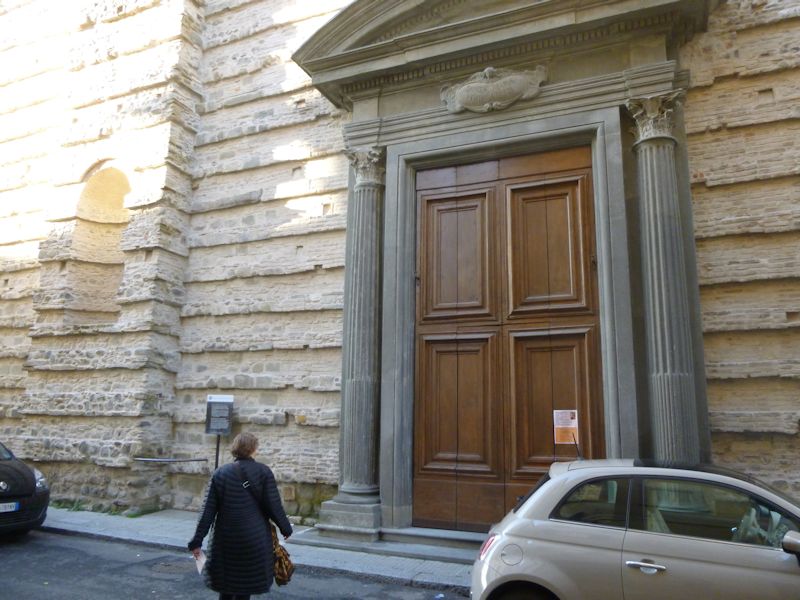
The Basilica della Santa Maria dell'Umiltà was built in 1495 to house the ca.1370 fresco of the 'Madonna of Humilty', which, distressed by violent conflicts among local political factions, had visibly sweated in 1490 and become the object of a cult in the region. The embarrassed factions apparently cooperated on the construction expenses.

Vasari designed the octagonal dome in 1562, based on the concept of Brunelleschi's dome in Florence, but that's all we'll get to see of it, because . . .
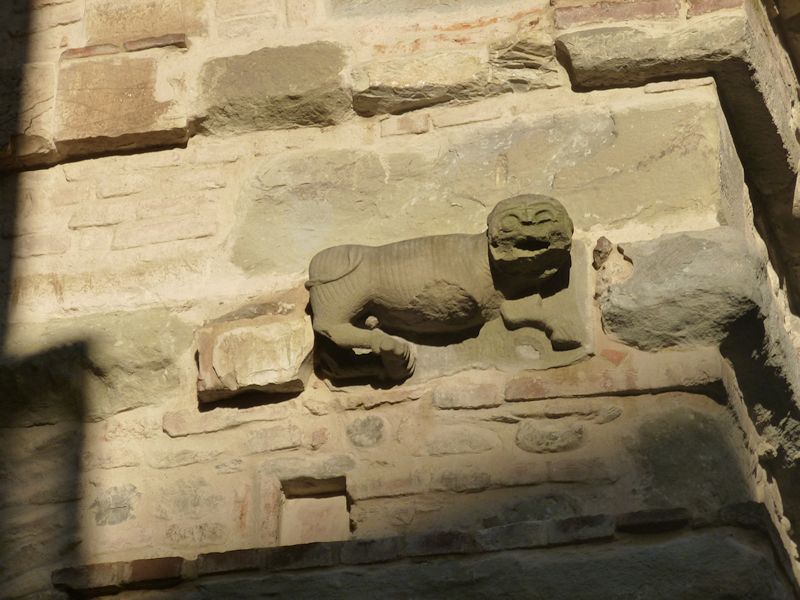
. . . it's closed for renovation. The Lady of Humility fresco will remain unseen by us, but we do have this pleasant chap to console us.
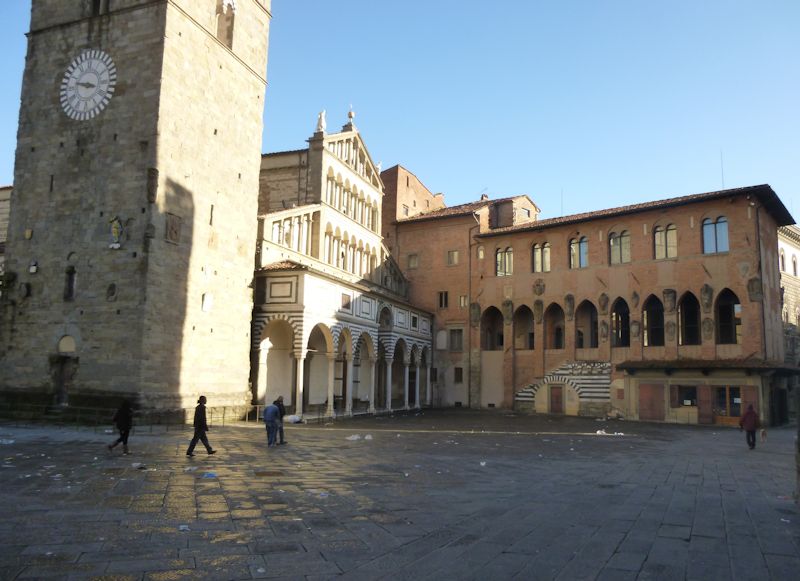
Back to the Duomo and the Palazzo dei Vescovi (it's 15:00 on the dot)

The Cattedrale di San Zeno. The first mention of a cathedral here that is likely to have been this one dates from 923, but it was rebuilt in the first half of the 12th century. The three loggias on the façade and portico were added in the first half of the 15th century.

The loggias. The façade is considered to be an amalgam of Pisan-Romanesque and Florentine Renaissance styles (I'm quoting that).

The portico

The brilliant ceramic bas-relief of Madonna and Child in the lunette over the front door is by Andrea della Robbia in 1505.

The arch connecting the town hall with the Cathedral

It's 15:05 and a religious gentleman has arrived to open the front door. Here we go.

Kristin in the left aisle of the three aisle nave

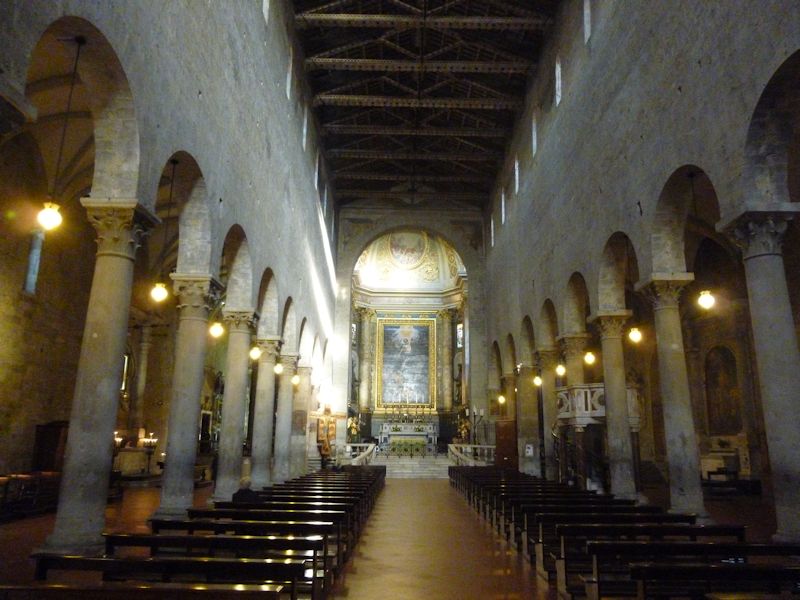
The centre aisle looking towards the altar
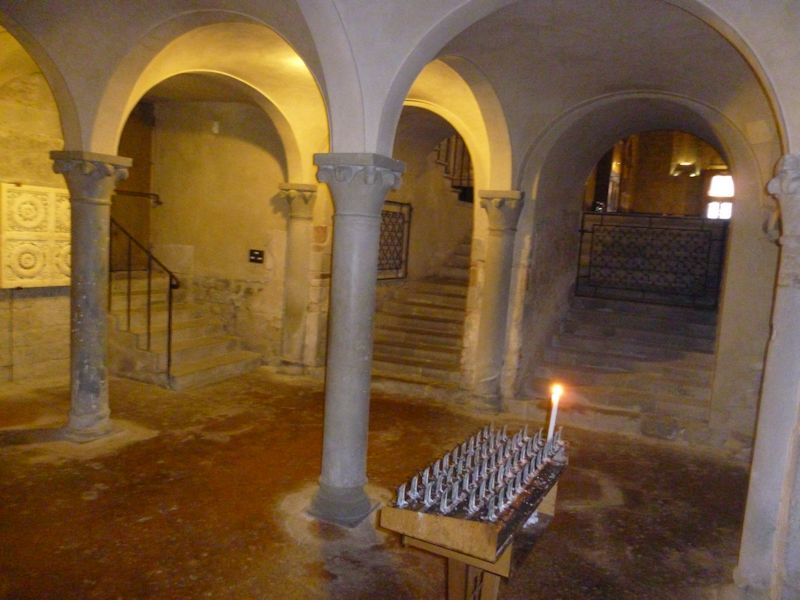
The Romanesque crypt, buried in earlier improvements, was restored during the restoration works of the 1960s.
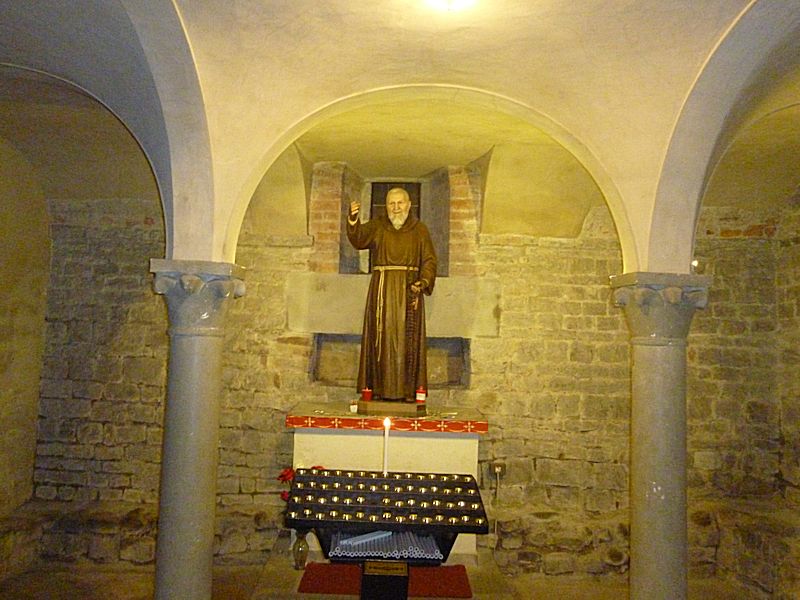
In the crypt, there stands a modern statue of a religious person, ready to relieve your burdens and help you if . . .

. . . you'll just leave your photograph with him for later reference. (That's presumably Padre Pio.)


A bishop resides within
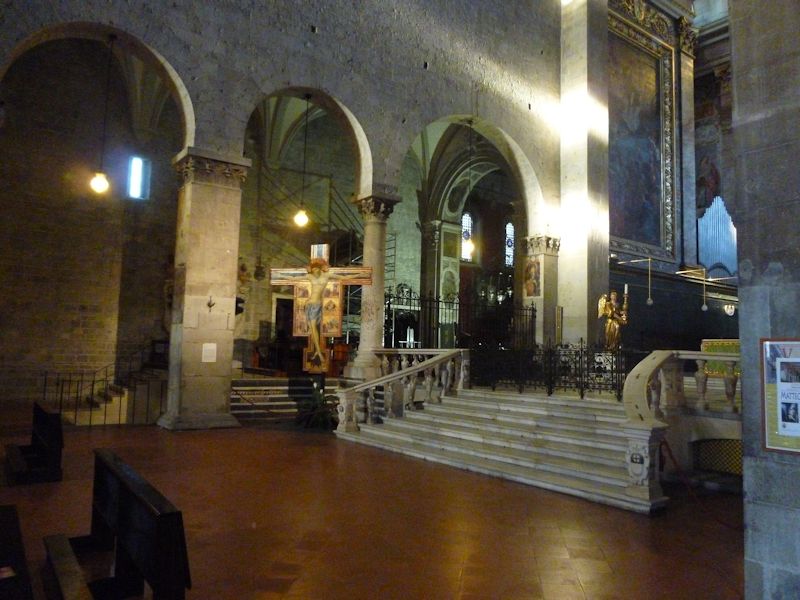
The steps to the raised floor of the presbytery. The crucifix is by the Marcovaldos from 1274.

The altar and apse

The vault of the presbytery. The side chapels, of the Sacrament and the Crucifix, are noteworthy in themselves. The Altar of Saint James presently in the Crucifix Chapel, embossed with more than 600 figures into a sheet of silver, is the most famous, but my 'no-flash' photo of it was rubbish. Atto of Portugal became Bishop of Pistoia in 1135, and in 1145 he bestowed upon the church here some relics he happened to have on hand of the Apostle James the Greater (San Jacopo, or Santiago), of Compostella pilgrimage fame, and St James became the patron saint of the city.
Going home
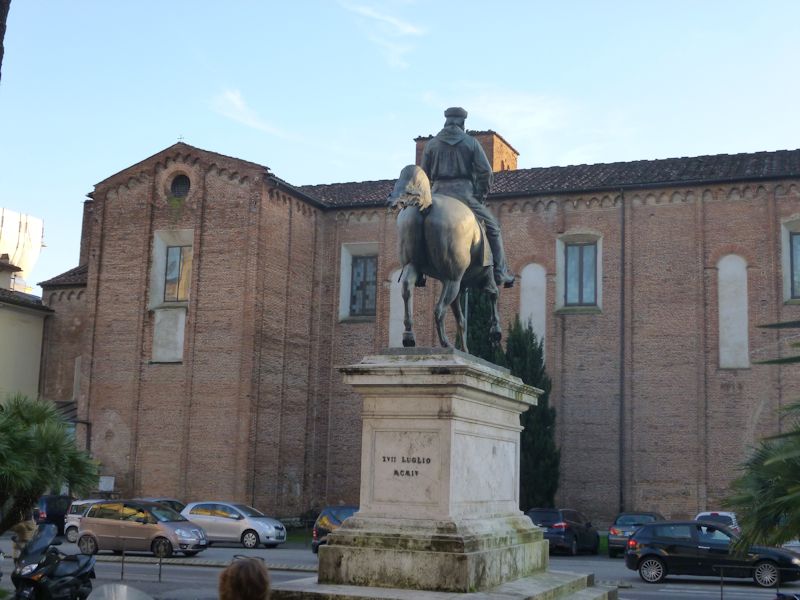
Oh, who could that be? Not Puccini!
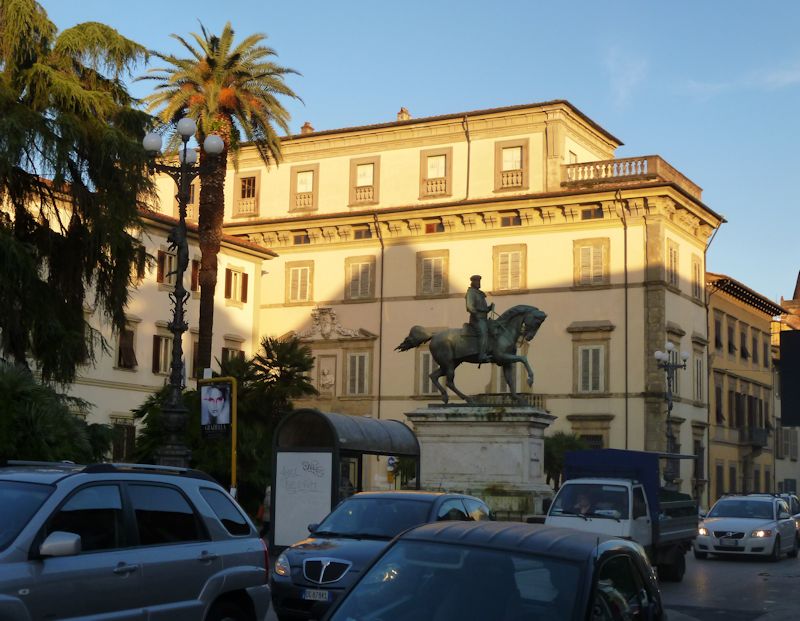
To every city, it's Garibaldi!

Goodbye to the Pistoia railway station

And hello to the passage up through the Lucca bastions from the train station into the city
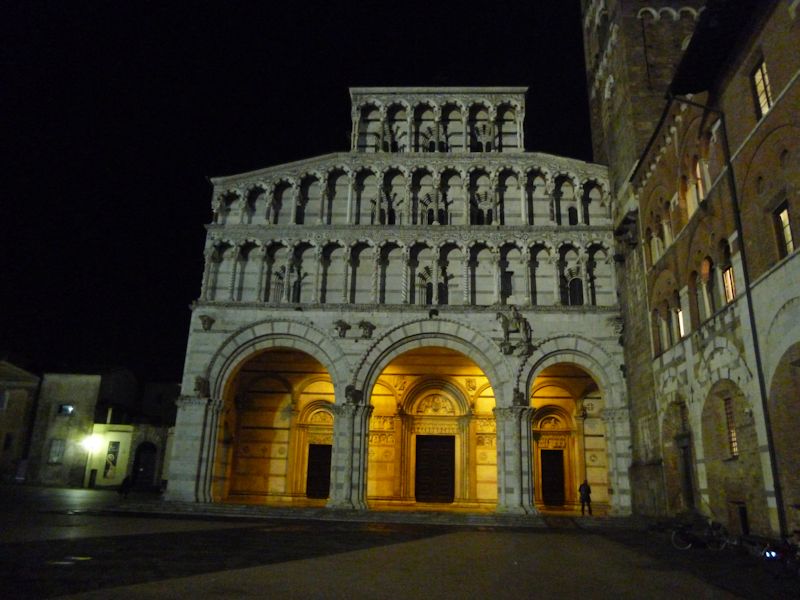
The Duomo di Lucca by night
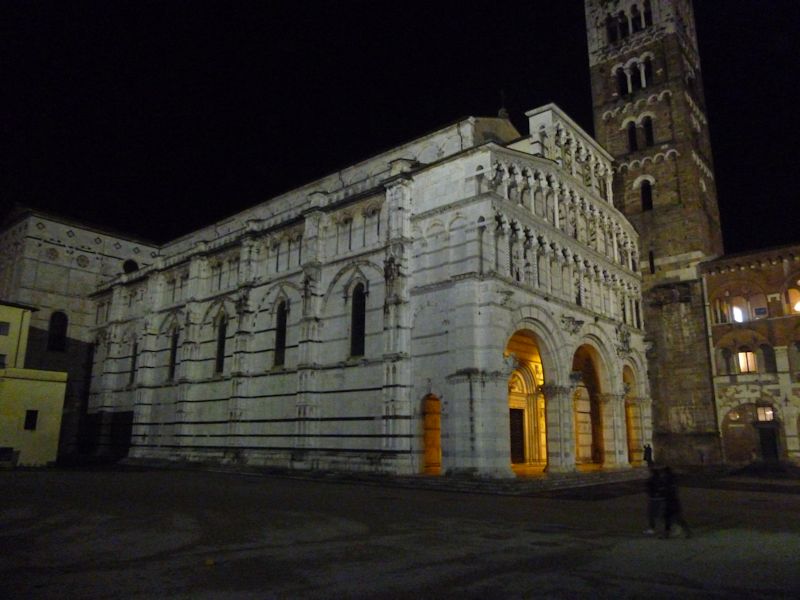
Ditto
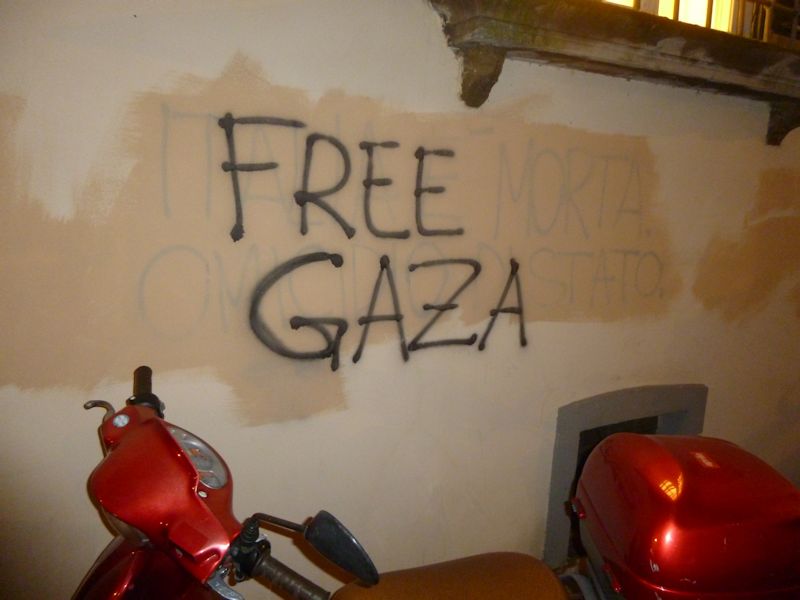
The European people have it right, but their governments lag far behind.

Walking back towards our flat -- the Piazza del Carmine

-- Oh, play for us, Santa!
       
     

 Feedback
and suggestions are welcome if positive, resented if negative, Feedback
and suggestions are welcome if positive, resented if negative,  .
All rights reserved, all wrongs avenged. Posted 22 December 2014. .
All rights reserved, all wrongs avenged. Posted 22 December 2014.
|





























































































